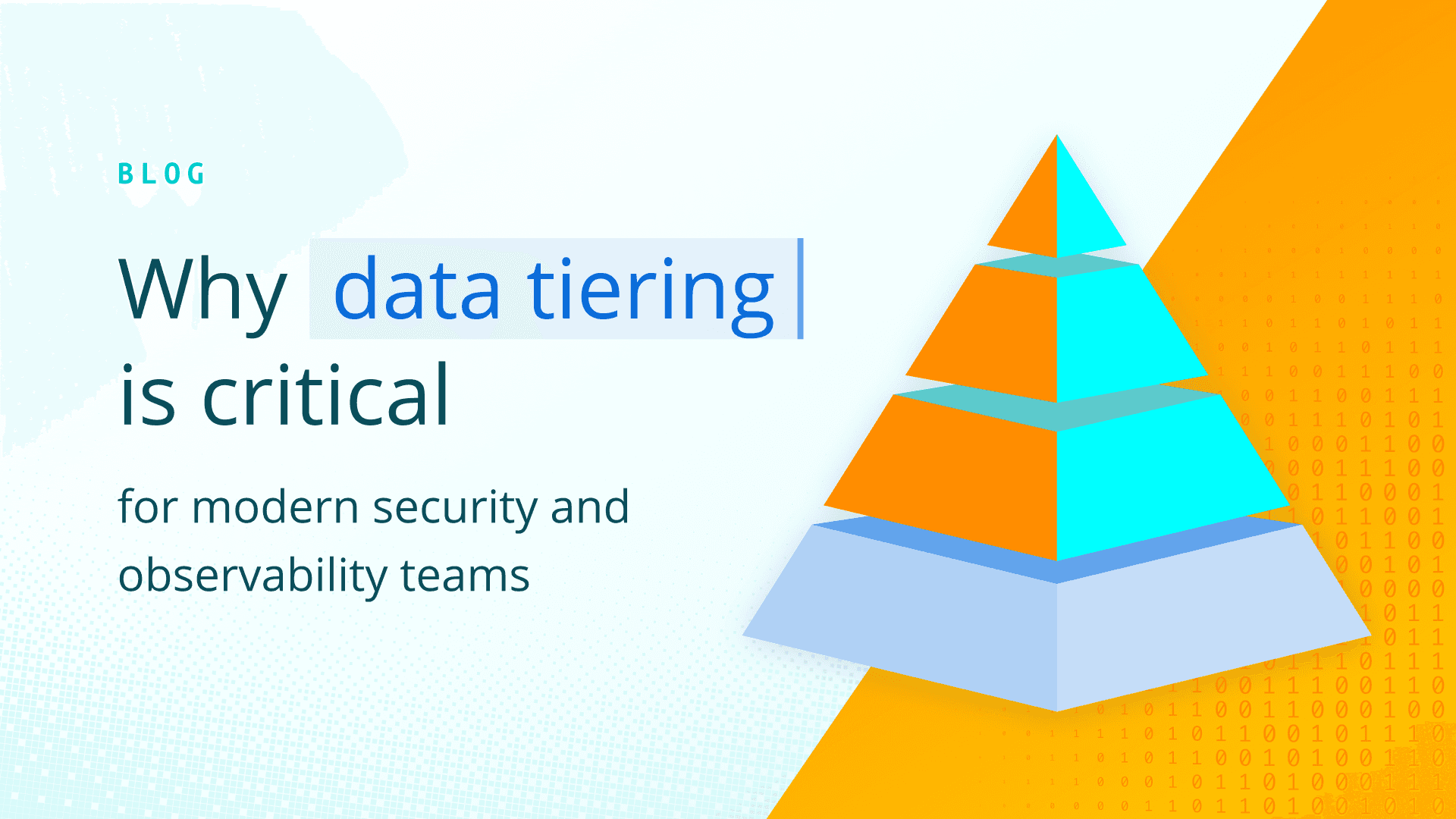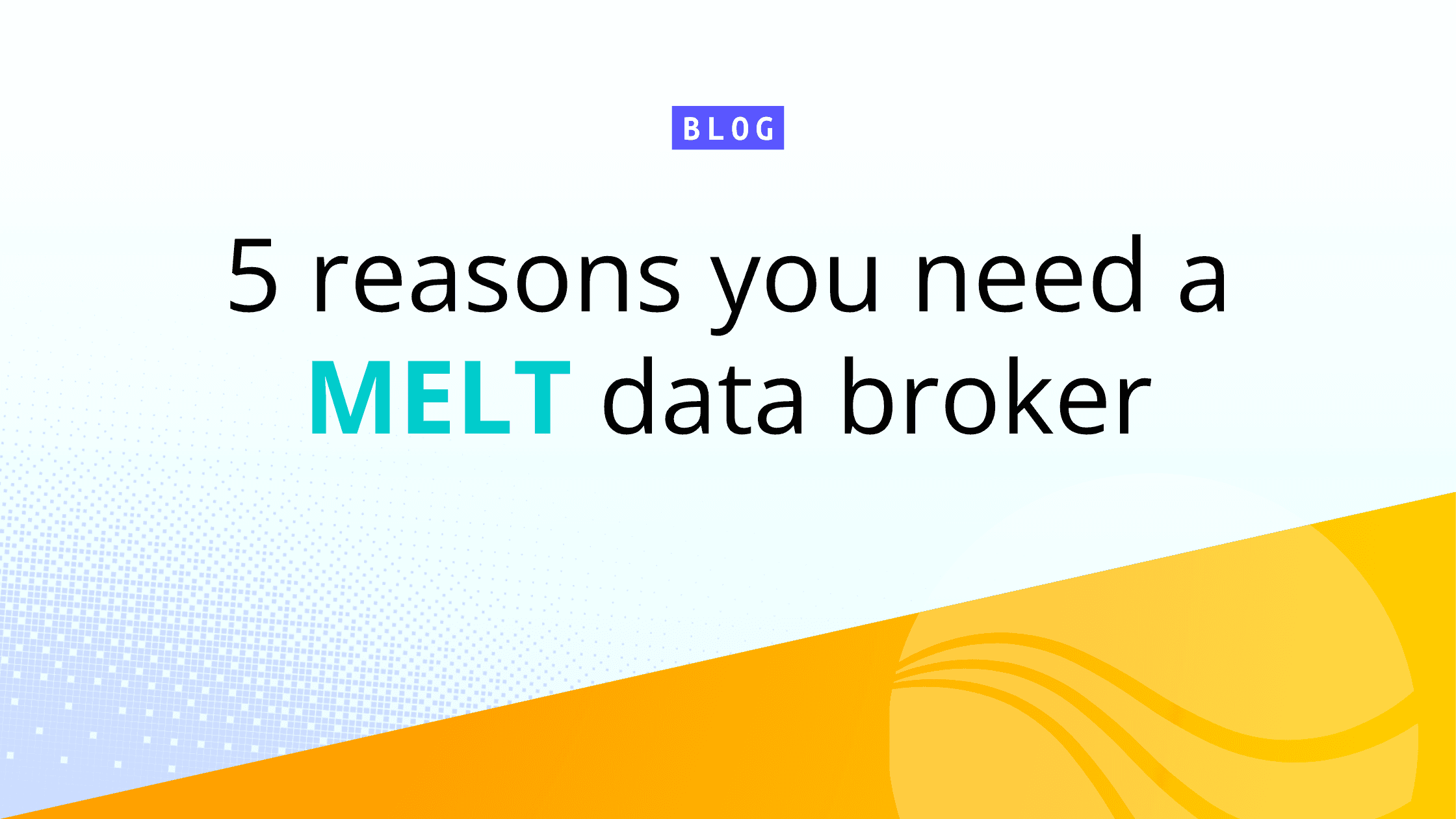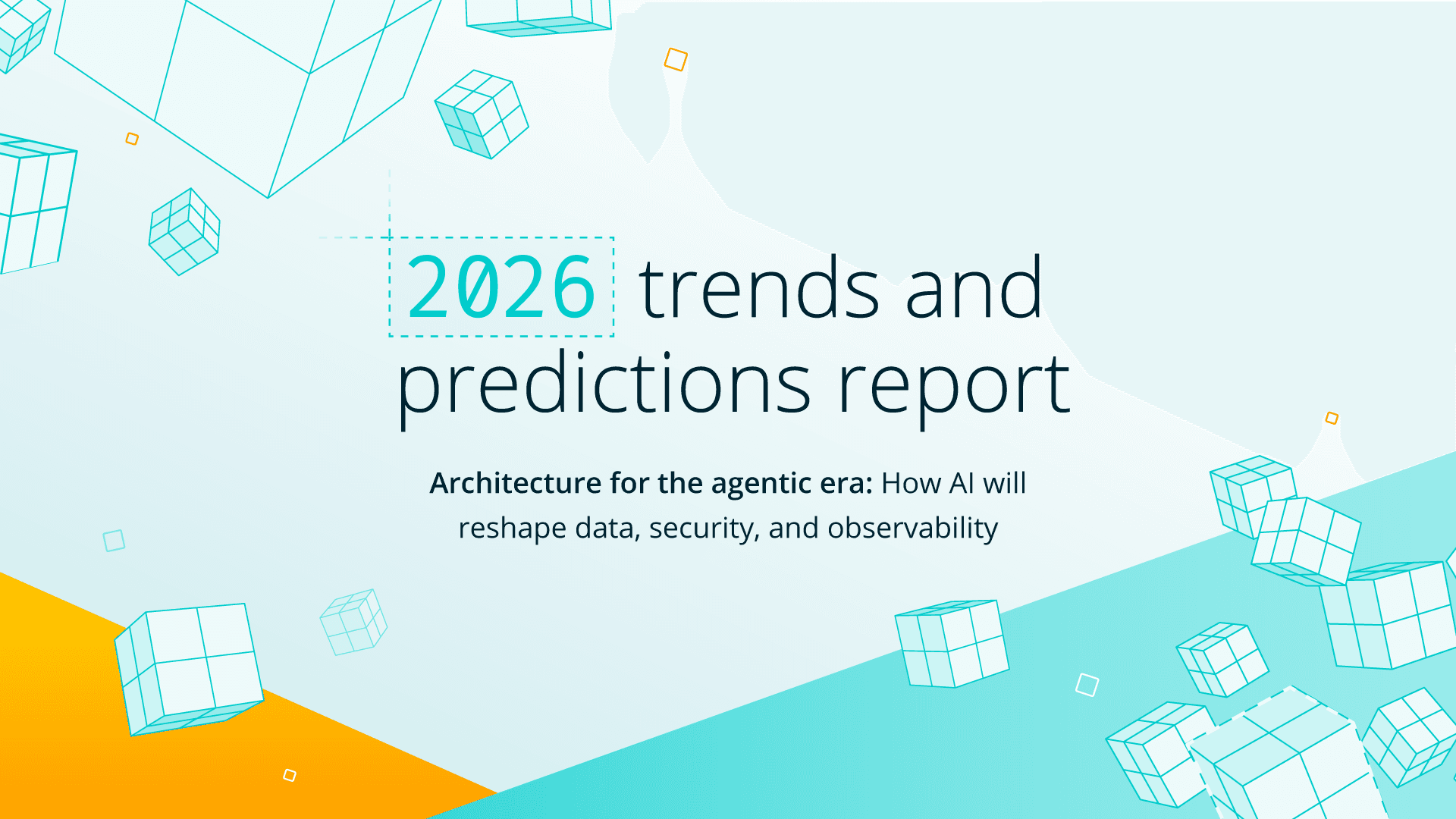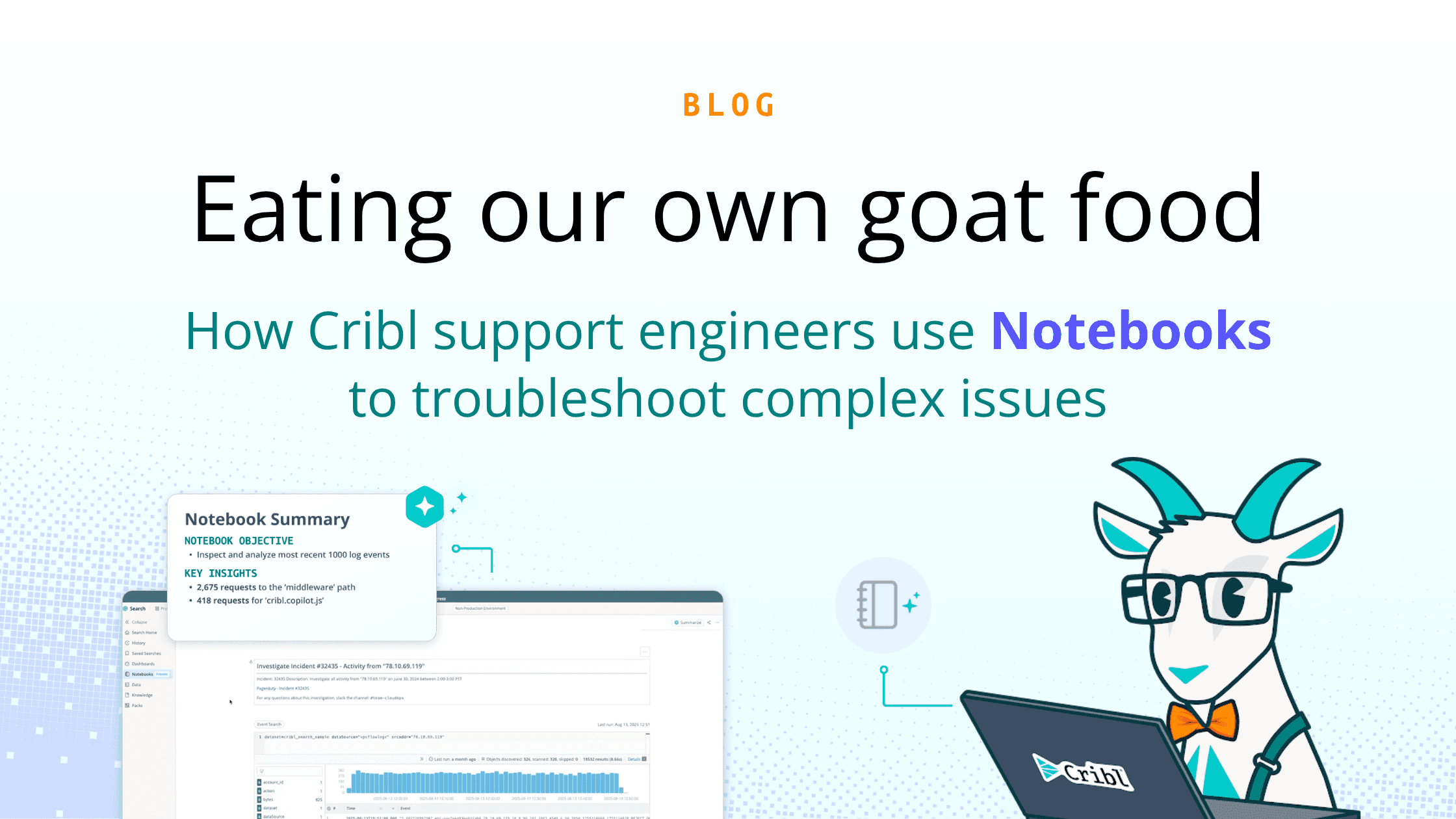In today's digital landscape, security and observability teams face an unprecedented challenge: managing massive volumes of data while maintaining both performance and cost-effectiveness. As organizations generate more data than ever before, the traditional approach of storing everything in high-performance, expensive systems is becoming unsustainable. How will your team evolve how it manages and uses telemetry data across the enterprise?
The Data Management Dilemma
Security and observability teams are caught in a tough spot. They need real-time access to critical data for incident response and performance monitoring, but they also must maintain historical data for compliance, trend analysis, and forensic investigations. Traditional solutions force teams to choose between performance and cost, often leading to compromises that impact effectiveness or blow up budgets.
What’s needed is an approach to storing and using telemetry data that isn’t all-or-nothing.
Understanding Data Tiering
Data tiering is an intelligent approach to data management that aligns storage solutions with the current value of the data, how it’s used, and who needs to access it. Think of it as creating a pyramid of data storage where each tier reflects the present value of the data it contains.
The top tier contains high-value, frequently accessed data stored in performance-optimized systems for real-time analytics and immediate access. This is your highest value data needing the fastest SLAs. This is best suited for lakehouse offerings with optimized storage, indexing, and query capabilities for the range of logs, events, metrics, and traces present in telemetry data.
Next is your frequently used but non-critical data. It’s likely data that aged out of the top tier, but you still want to reference. Perhaps you need context for investigations, or to understand application performance over longer time horizons. Storage is less optimized but also lower cost to reflect the lower priority of the data. Enter opinionated object storage: columnar formats stored in cost-optimized buckets.
Third, you have your infrequently accessed data. This tier might contain data you’re keeping for compliance or regulatory requirements. This is the data you don’t actively query, but when you do, SLAs are much more forgiving. You’re putting this in object storage in a raw format to optimize cost while still making it accessible. Again, you’re looking at object storage here without the ceremony of formatting it.
Of course, you’re not limited to these tiers. A modern solution for telemetry data management and analytics, like Cribl’s data engine, should give you options for various tiers of data, each with different performance and cost characteristics
Another key characteristic of a data tiering strategy is moving data between tiers. After all, the value of data is zero until it isn’t. Some internal or external event may trigger a need to elevate historical data into your highest performing tier. Promoting data, and later demoting it, should be a critical capability for your data tiering strategy.
Querying and analyzing data is another essential capability. A modern telemetry data management solution must allow seamless access across tiers with a single language and interface. This includes querying data stored in external tools, like your SIEM, APM, or other lakehouses. Think of these external data sources as your fourth tier.
In short, design your data tiering strategy around five key factors:
Age: Newer data is commonly more valuable and sees more access. As data ages, its value falls but never quite reaches zero.
Criticality: Telemetry data from critical systems has higher value than data from non-critical systems.
Accessibility: Broadly accessed data typically needs faster SLAs for data, but this also implies governance and management capabilities. Don’t overlook this when architecting your tiers.
Volume: This is counterintuitive, but it largely boils down to supply and demand: a huge supply of logs likely sees little demand. Your environment may be different, but don’t assume high volume means high value.
Environment state: Another dynamic factor, environment state means what’s happening in your environment right now? If you’re currently managing a breach, it’s likely all data will be highly valuable until the incident is resolved.
Now that I’ve covered the how of data tiering, let’s look at the why.
The Benefits of Tiered Data Management
1. Cost Optimization Without Compromise
By matching storage solutions to data value and access patterns, organizations can significantly reduce their storage costs without sacrificing access to critical information. High-performance storage is reserved for data that truly needs it, while historical data moves to more cost-effective solutions.
2. Enhanced Performance Where It Matters
When you separate high-priority, frequently accessed data from historical data, your critical systems perform better. This means faster query responses for security analysts and more efficient real-time monitoring for observability teams.
3. Compliance Without Complexity
Data tiering enables organizations to maintain comprehensive data retention policies while managing costs. Full-fidelity data can be stored in cost-effective object storage, ensuring compliance requirements are met without maintaining expensive active storage systems.
4. Scalability and Flexibility
Modern data tiering solutions separate storage from compute resources, allowing teams to scale each independently. This means you can analyze large volumes of historical data without maintaining expensive infrastructure year-round.
The Future of Data Management
As organizations continue to generate more data, the importance of intelligent data tiering will only grow. The ability to maintain comprehensive data access while optimizing costs will become a critical competitive advantage. Security and observability teams that embrace data tiering now will be better positioned to handle future data challenges while maintaining operational efficiency.
However, while an effective data tiering strategy will start you on the journey of data modernization, it’s only part of the data management story. Data modernization is primarily a technical and architectural transformation process that focuses on updating legacy systems, tools, and infrastructure to contemporary standards.
Data maturity is the other side of the coin, and describes how effectively an organization uses its data assets across:
Governance and policies
Data quality management and standards
Analytics capabilities
Data culture and adoption
Strategic alignment of data initiatives with business goals
In other words, if data modernization is the how, data maturity is the why. Unless you develop your data maturity alongside your modernization program, you won’t realize the full value of your investment. If you’re not sure how to advance your data maturity, don’t worry. We’ll have a lot to say about that in the coming months.
Wrapping up
Data tiering isn't just about storage management – it's about creating a sustainable, scalable foundation for security and observability operations. By implementing a thoughtful data tiering strategy, organizations can balance performance, cost, and accessibility while ensuring they're prepared for future data growth. The time to start thinking about data tiering isn't tomorrow – it's today.






